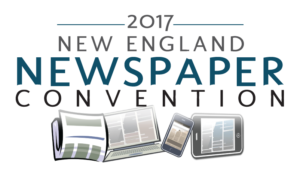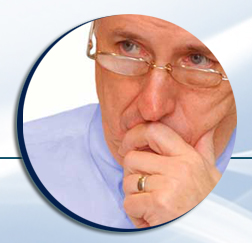By Alison Berstein,
Bulletin Correspondent
Ed Henninger is no stranger to newspapers.
Henninger, an independent newspaper consultant for more than 25 years, is the director of Henninger Consulting, based in Rock Hill, S.C.
Henninger will speak on “Designing your niche publications” at the New England Newspaper and Press Association’s winter convention at the Boston Marriott Long Wharf hotel Friday, Feb. 24, and Saturday, Feb. 25.
To him, a newspaper and its readers have an important relationship – one that works both ways.
“Design is a two-sided relationship – how the paper approaches the reader, and how the reader approaches the paper,” he said.
Thinking like a news designer requires a balance of being analytical and creative, Henninger said.
“A right-brained person is someone who is more visual, more willing to explore the rules if not bend the rules. They’re more ready to try something new,” he said. “Left-brained people are word people, they’re writers, they’re editors. They know and can state and follow the rules.”
Henninger sees value in having both an understanding of the rules and the courage to stray from that foundation.
“Newspaper design is not about how it looks but how it works,” he said. “I know what the laws are; I know what the rules are of design.”
“What I’ve discovered is that when I’m working on the design of a page, I jump from one lobe to the other. That’s part of the fun of what I do,” he said. “The right brain is saying, ‘That’s really cool,’ the left brain is asking, ‘Does it work?’”
He urges big thinkers to have that flexibility between the intellectual left brain and the innovative right brain.
“Really great designers are people who can do that all the time because they can do something that just really works,” he said. “You ask them, ‘Why did you do that?’ and they’ll say, ‘I don’t know.’
“It fits all the rules, and yet it stretches those rules,” he said. “It’s really fascinating to get into that kind of talking and thinking.”
That fascination is critical to a news career, said Henninger, who differentiates a career from a job.
“You have to like it, don’t you?
“Designing newspapers is a profession, and that’s important to me. We need to think, act and design like a professional,” he said.
Henninger was introduced to news design through working with his college newspaper.
“I didn’t realize that I was falling in love with design at that time. It took me 40 years,” he said. “You have to like it, you have to love it.”
Henninger thinks that training is important to help this passion grow.
“A profession is what you want to get better at doing,” he said. “There are many people for whom news design is a job, and the reason it is is that they haven’t been given the kind of training that becomes a profession for them.”
He thinks that managers should see that their employees receive that pivotal training so that their employees will be capable of accomplishing the tasks expected of them.
“Too many managers ask their people to do design without a lick of training,” he said. “I don’t bear any ill will toward people who are put into that positon, I actually feel bad for them. And they’re doing it to their readers and to their publishers. They don’t see that they’re doing the wrong thing, and I don’t mean that in a negative way.”
Henninger outlined the various resources available to designers.
“Just like any skill, they need to learn,” he said. “There are webinars, there are all kinds of blogs. They could look at newspapers that do design well and emulate them. I didn’t say copy. Emulate.”
That notion – publications emulating, not copying, other publications – is an important one to Henninger, who has worked with publications throughout the country and held workshops in several countries.
Although the principles of design do not change from newspaper to newspaper, each publication should have its own look, he said.
“It would be a mistake … if every newspaper looked like every other newspaper,” he said. “The look of a paper will differ markedly from a paper right up the road. It has to do with locality, and what they’re trying to do for their readers.”
Henninger feels promising about the future of news design because of the advanced design capabilities available.
“We have better type,” he said. “We have better presses so we can push print. We have color on every page in some newspapers. We didn’t have that at first. Plus software’s made it possible to do all kinds of things.”
He also noted that publications are paying more attention to design.
“Even small-town papers are seeing that design matters, and they want to be better designers,” he said. “They’re seeing the papers and learning that they can’t just do things the way they’ve done it. I’m encouraged by that.”
Convention Speaker Henninger
‘Design is a two-sided relationship — how the paper approaches the reader, and how the reader approaches the paper.’
— Ed Henninger, Director
Henninger Consulting, Rock Hill, S.C.
‘Newspaper design is not about how it looks but how it works.’
— Ed Henninger
‘Too many managers ask their people to do design without a lick of training.’
— Ed Henninger


